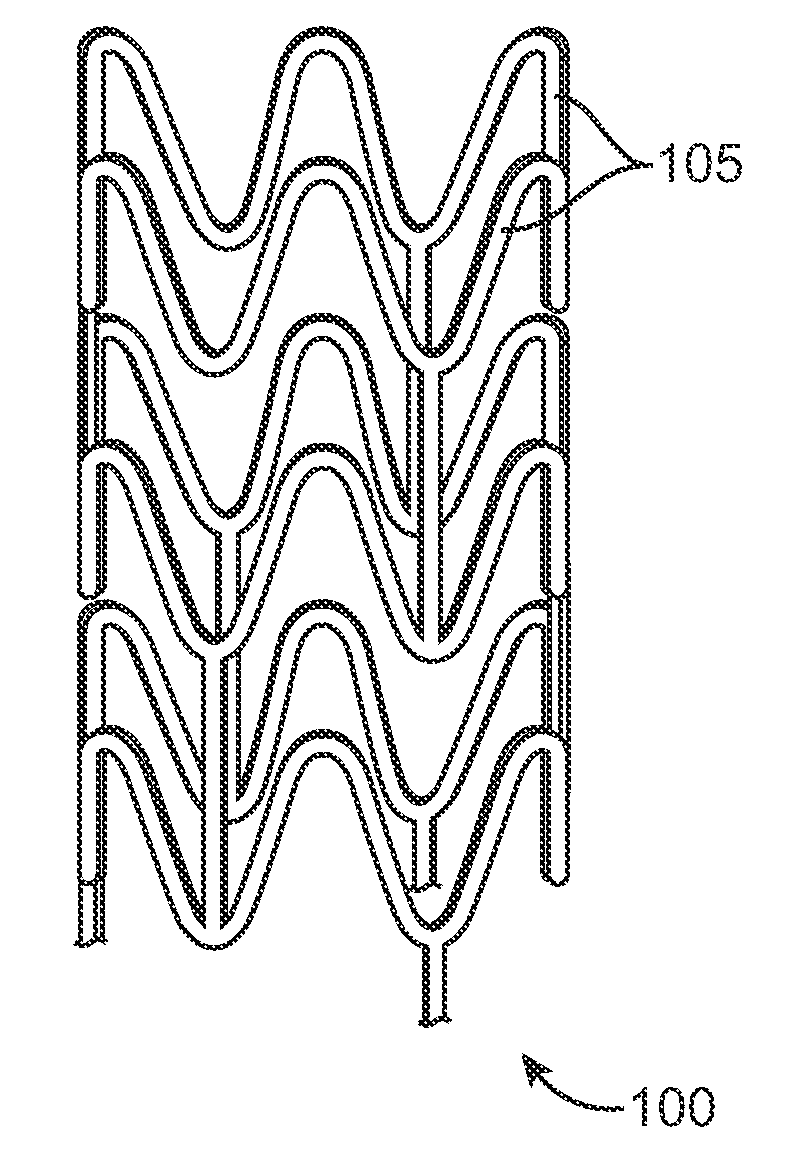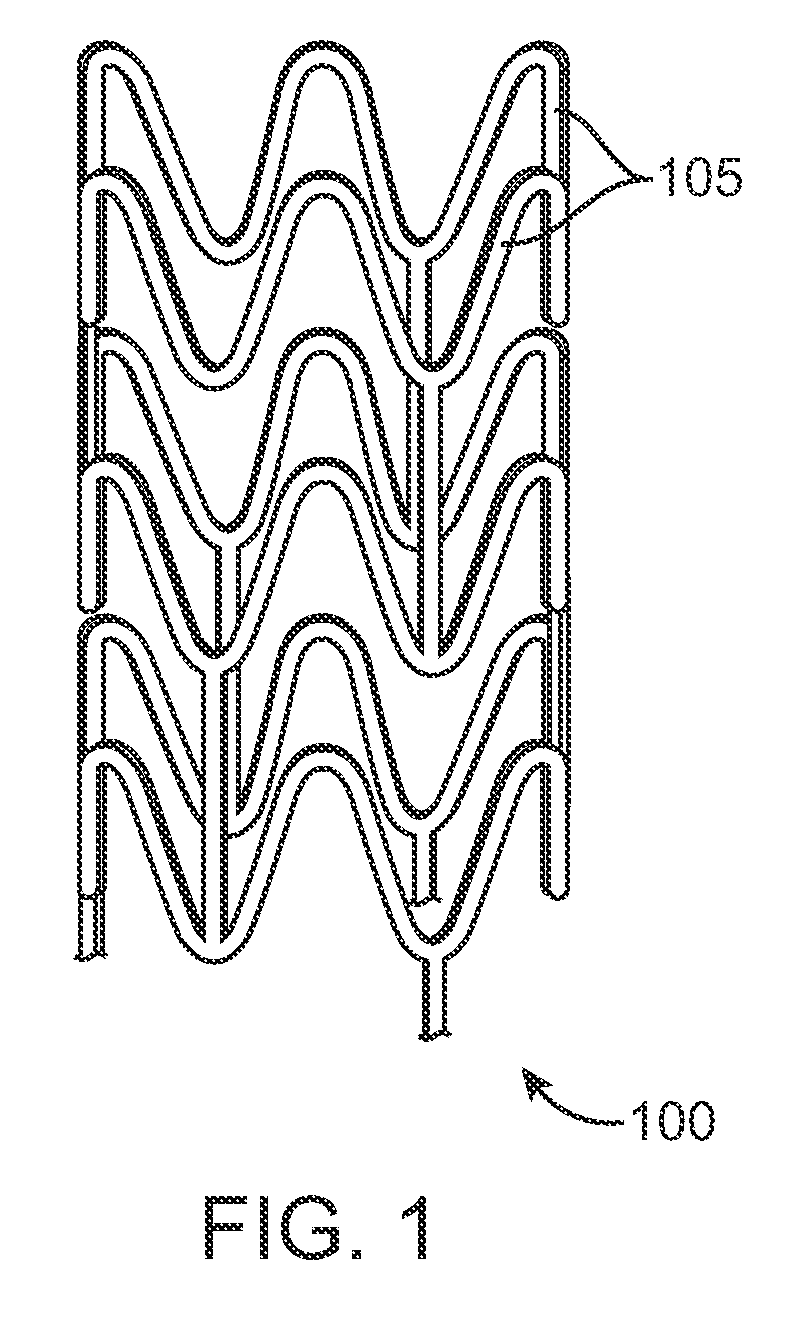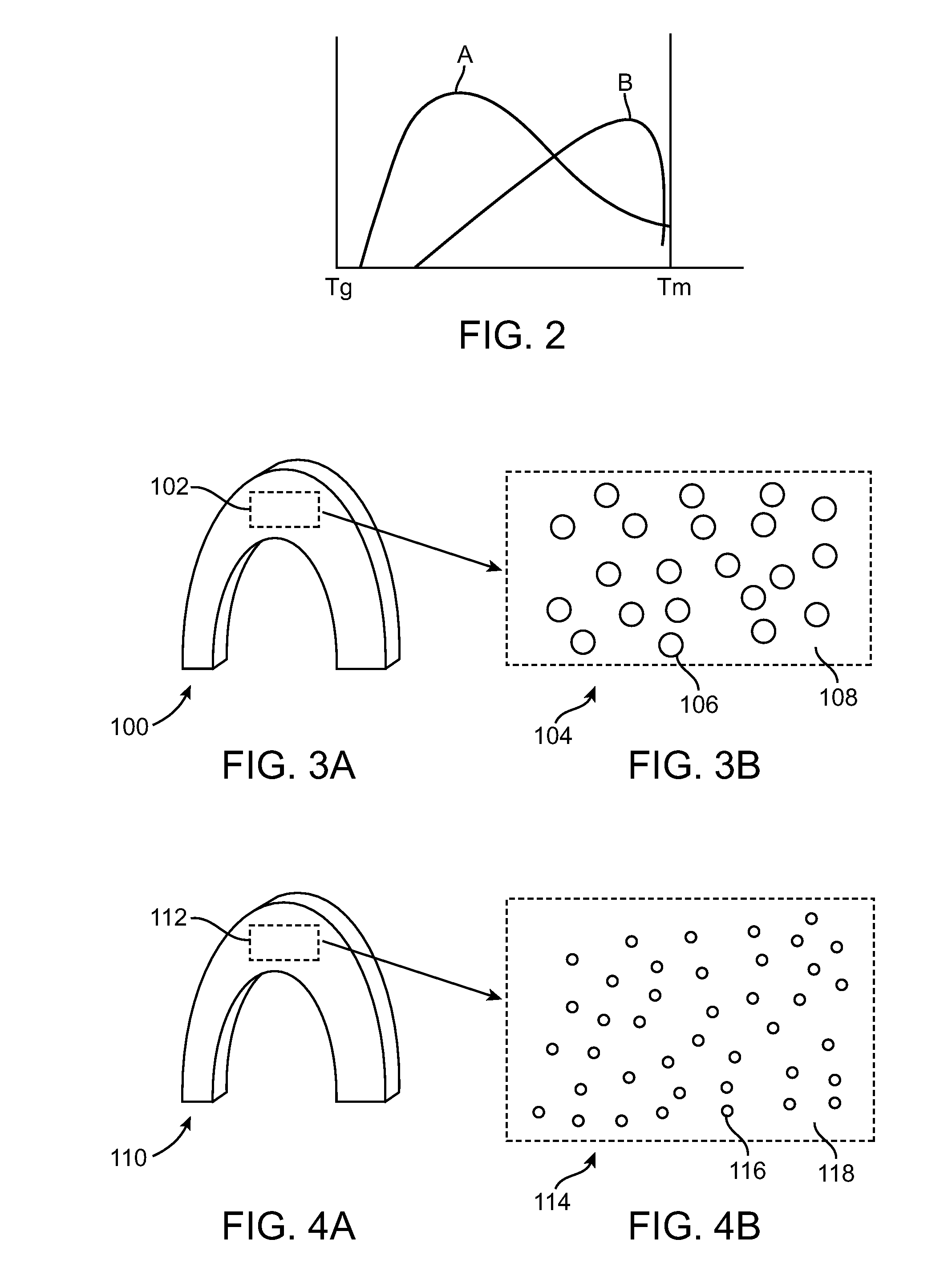Fracture Toughness Of Medical Devices With A Stereocomplex Nucleating Agent
a nucleating agent and stereocomplex technology, applied in the field of stents, can solve the problems of difficult treatment, adverse or even toxic side effects, and the stenosis remains a significant problem, and achieve the effect of improving the toughness of the fractur
- Summary
- Abstract
- Description
- Claims
- Application Information
AI Technical Summary
Benefits of technology
Problems solved by technology
Method used
Image
Examples
example 1
Preparation of PLLA Stent from Extruded and Expanded Tubing Using PLLA / PDLA Stereocomplex as Nucleating Agent
[0095]Step 1 (material mixing): 20 g PDLA (Mw≈600 kg / mol) is mixed with 1 kg of high molecular weight PLLA (Mw≈600 kg / mol) through melt compounding using a twin screw extruder at 200° C., or through solution blending by dissolving both PLLA and PDLA in chloroform and precipitating them into methanol.
[0096]Step 2 (tubing extrusion): The mixed PDLA / PLLA material is extruded in a single screw extruder at 200° C. and directly quenched in cold water. The size of the extruded tubing is set at about 0.02″ for inside diameter (ID) and 0.06″ for outside diameter (OD).
[0097]Step 3 (tubing expansion): The extruded tubing is placed in a glass mold and expanded at about 200° F. to increase its crystallinity and biaxial orientation. The final ID and OD of the expanded tubing are set at 0.10″ and 0.11″, respectively.
[0098]Step 4 (stent preparation): A stent is cut from the expanded tubing u...
example 2
Preparation of PLLA Stent from Extruded Tubing Using PLLA / PDLA Stereocomplex as Nucleating Agent
[0099]Step 1 (material blending): 60 g PDLA (Mw≈600 kg / mol) is blended with 1 kg of high molecular weight PLLA (Mw≈600 kg / mol) through melt compounding in a twin screw extruder at 200° C.
[0100]Step 2 (tubing extrusion): The PDLA / PLLA blend is extruded in a single or twin screw extruder at 200° C. and slowly cooled down in warm / hot water before it's finally quenched in cold water. The size of the extruded tubing is set at about 0.07″ for ID and 0.08″ for OD.
[0101]Step 3 (stent preparation): A stent is directly cut from the extruded tubing using a femto-second laser, crimped down to a smaller size (0.05″) on a balloon catheter and sterilized by an electron beam at a dose of 25 kGray.
PUM
| Property | Measurement | Unit |
|---|---|---|
| wt % | aaaaa | aaaaa |
| processing temperature | aaaaa | aaaaa |
| Tg | aaaaa | aaaaa |
Abstract
Description
Claims
Application Information
 Login to View More
Login to View More - R&D
- Intellectual Property
- Life Sciences
- Materials
- Tech Scout
- Unparalleled Data Quality
- Higher Quality Content
- 60% Fewer Hallucinations
Browse by: Latest US Patents, China's latest patents, Technical Efficacy Thesaurus, Application Domain, Technology Topic, Popular Technical Reports.
© 2025 PatSnap. All rights reserved.Legal|Privacy policy|Modern Slavery Act Transparency Statement|Sitemap|About US| Contact US: help@patsnap.com



